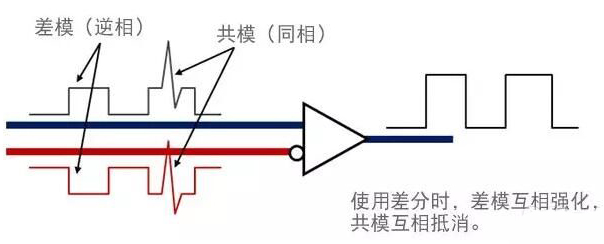Common Mode Signal and Differential Mode Signal
Differential mode signal, also known as common mode signal, refers to the difference in signal between two wires. Common mode signal, on the other hand, is also called ground-referenced signal and refers to the signals with respect to the ground for each of the two wires.
- Differential Mode Signal: Signals with equal magnitude but opposite direction.
- Common Mode Signal: Signals with equal magnitude and the same direction.
For a two-input system, common mode is the arithmetic average of the two input signals, while differential mode is the difference between the two input signals.

In the case of a pair of signal lines A and B, differential mode interference is equivalent to adding interference voltage between A and B, while common mode interference is equivalent to adding interference voltage between A and ground and between B and ground. Transmitting differential signals using twisted pair cables is a common practice to eliminate common mode noise. The principle is simple: by twisting the two wires together, the common mode interference voltage they experience is very close, and the value of Ua - Ub remains virtually unchanged. In practical applications, variations in temperature and various environmental noises can be considered as common mode interference. However, if the ground noise reduction on the two wire lines is not the same during transmission, causing a voltage difference between the two wire lines, the common mode noise transforms into differential mode noise.
References and Acknowledgments
Original: https://wiki-power.com/ This post is protected by CC BY-NC-SA 4.0 agreement, should be reproduced with attribution.
This post is translated using ChatGPT, please feedback if any omissions.